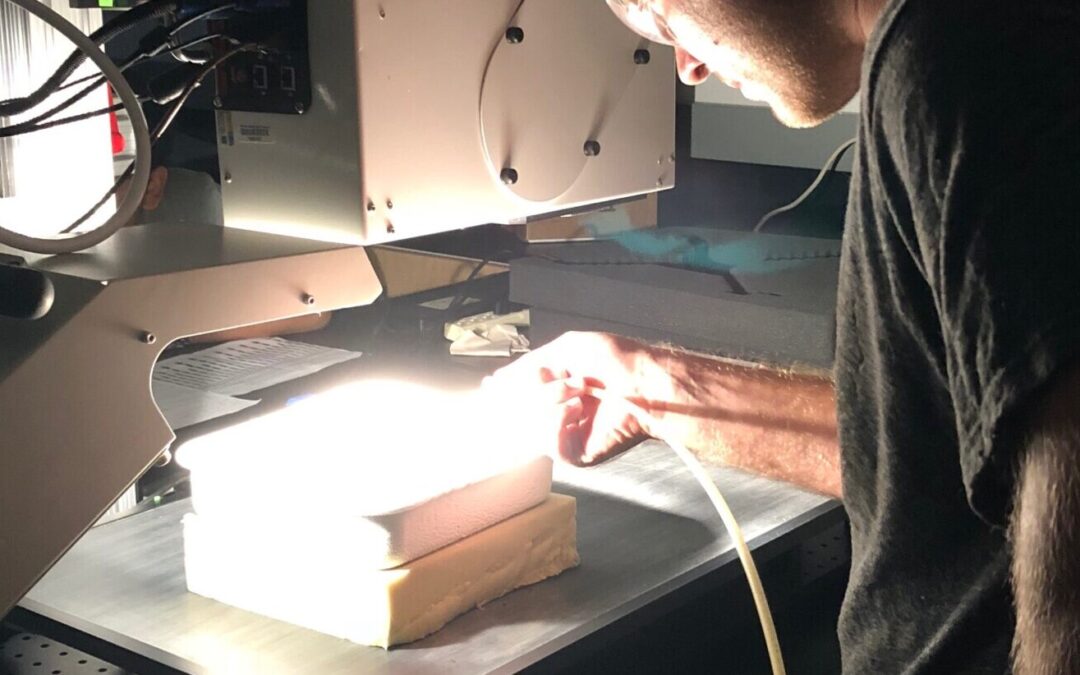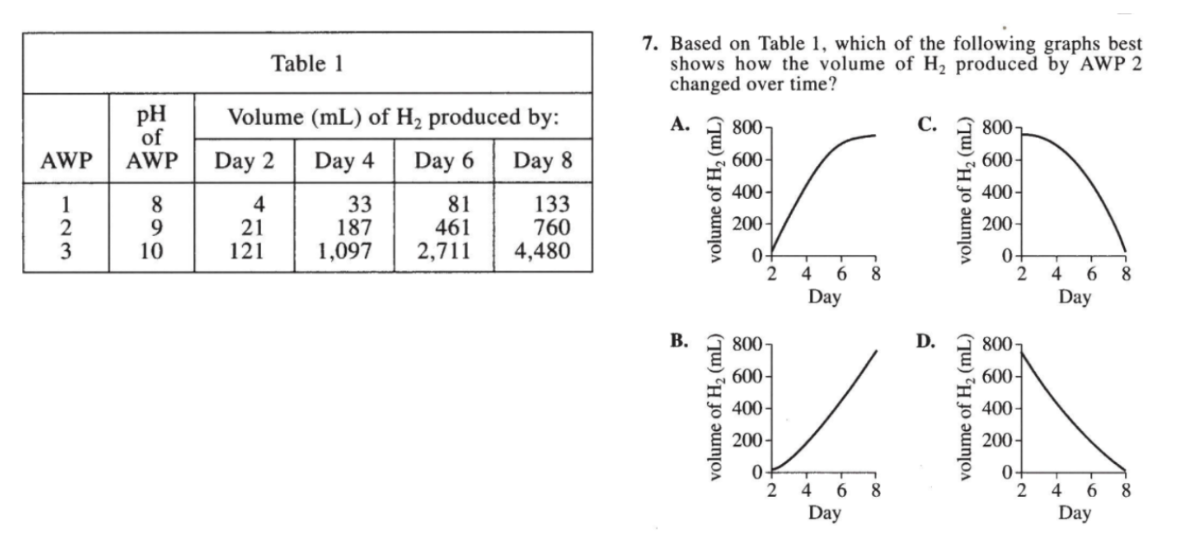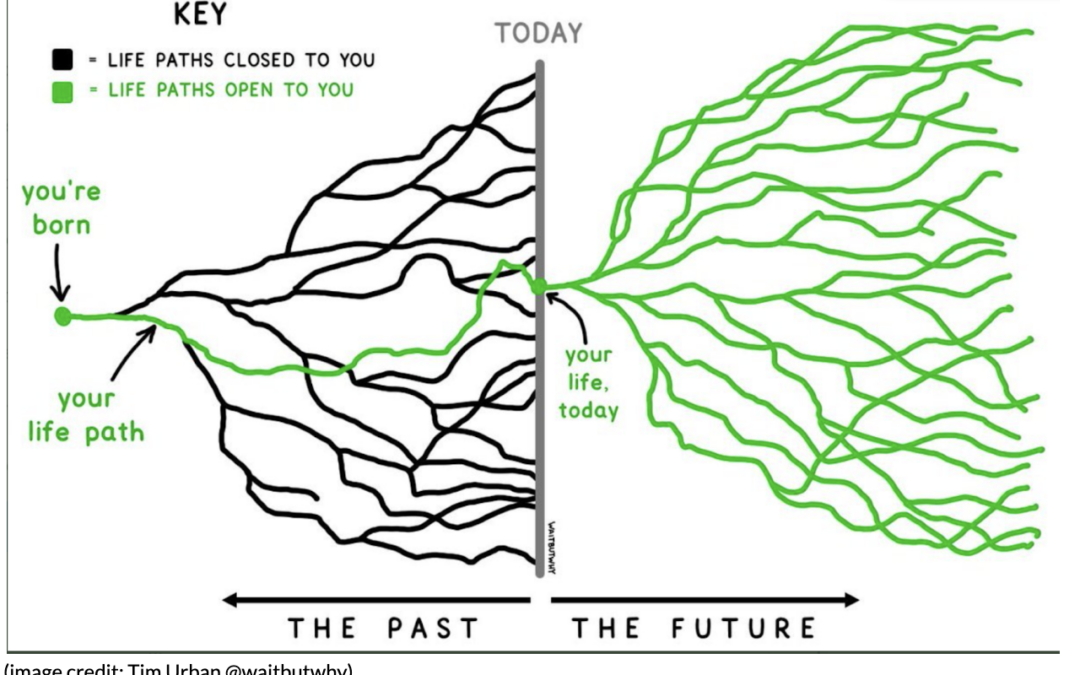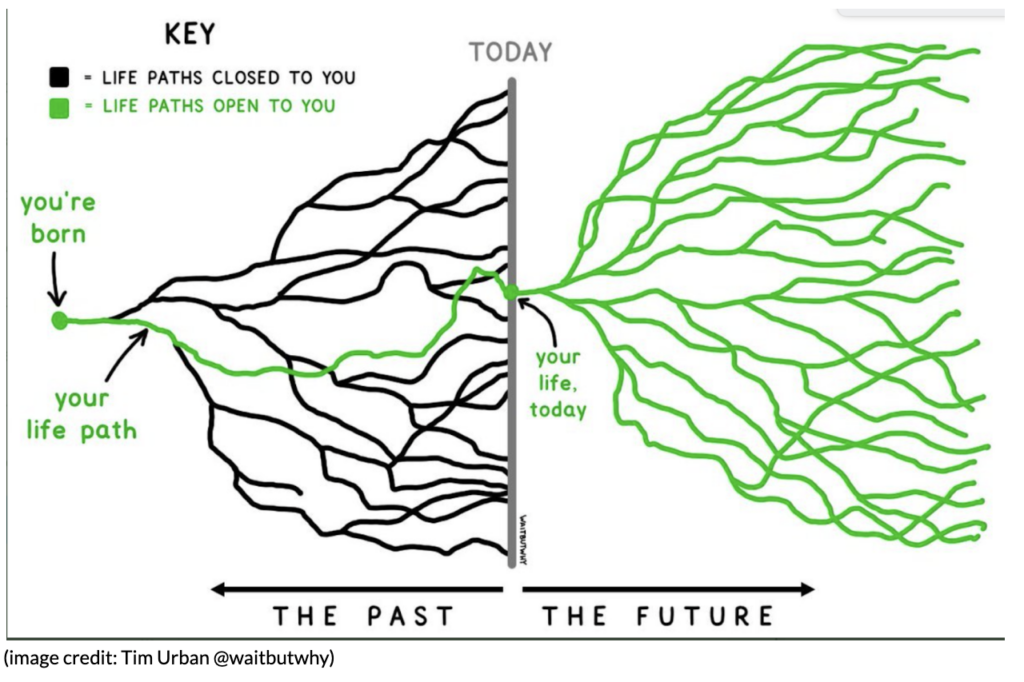
by College Goals
Recently I traveled back home to South Africa with a small group of graduate students on a study trip. It was wonderful because they were wonderful – smart, funny, and interesting. But in addition to amusing conversations about the etymology of words and debates about the addictive qualities of desserts, we also participated in hard, serious conversations about challenging subjects, from government corruption to the state of conservation.
What struck me most in these conversations, though, was the passionate curiosity, as Einstein described it, that these young people—by any measure some of the highest achievers in their respective fields in the world—could bring to almost any subject. Whether the conversation was about democracy or economic policy or historical injustice, and regardless of their field, they could ask thoughtful questions. I realized that what set them apart, and probably did even when they first applied to college, was a driving desire to know—what Stanford, in an earlier iteration of its application, called “intellectual vitality.”
I have often thought about this quality in my previous life as an admission officer for Brown. In that capacity, I read close to two thousand applications each season. I think it hard for someone who has not participated in the process of evaluating applications at a super-selective college to understand just how exceptionally deep its applicant pool is in talent. It is a pool in which a college can admit a completely different group of students without shifting the markers of excellence of its admitted class.
That excellence is oddly comforting—it’s nice to know there are so many smart, accomplished, and interesting young people in the world! It is also the most challenging aspect of selective admission: when you have such a huge number of outstanding applicants and you only have space for a small, fixed number of them, how do you make meaningful decisions? Sometimes the choice is led by an institutional agenda. A selective school can meet its specific needs—in a given year it might be for students in particular fields of study; students underrepresented by race or ethnicity; or those with particular skills, such as oboists or sculptors—without ever dipping far into an accomplished pool of applicants. If, at a very selective school, great academic results unlock the door, it is this dollop of something extra that propels an applicant through it and into the class.
For some students, the bit of extra that they bring to the table might be intellectual curiosity. Thinking of this reminds me of a conversation with an admission officer at MIT about the kinds of students that they prefer to admit. He said that they liked to see “students who were building a rocket in their garage.” I don’t think he meant it literally – though perhaps doing so would actually win you points at MIT! Instead, I took it to mean that he was really describing students who were so excited about an idea, so driven by curiosity, that they were willing to invest and participate in any opportunity to learn more and to explore.
All of which brings me back to where I started. Many parents want to know how to put their child on the path to an Ivy or a school of similar brand (scarily enough, even parents of elementary school students!). Should they invest in yet another expensive summer program at a brand-name school? Should their child seek out a summer research internship with a local professor, or found a club at school to do what three other clubs already do? In truth, their children should do whatever will encourage them to develop a voracious curiosity, a drive to know and understand aspects of their world, a desire to have their lovely young minds blown by something interesting. Those students may or may not make it to their parents’ dream school in the end, but they will have the capacity to wring an extraordinary education from any school that is lucky enough to have them.

by College Goals
The stress around standardized testing has not gone away despite the shifts that many schools have made toward test-optional admissions. In fact, for some students, the stress around standardized testing seems to have only increased as they consider how to maximize their scores to submit to schools that are test-optional (particularly when those schools seem to have a preference for students to submit high test scores). The specifics around whether “test-optional” really means OPTIONAL is a subject for another blog post. Today, let’s talk about the SAT and the ACT, how they are alike, how they diverge, and how you might be able to choose which test to take without going through the onerous challenge of sitting for both.
First, at the root, the SAT and the ACT really are very similar tests.
Both the SAT and the ACT focus on testing a student’s ability in the key areas of reading, writing, and math. They both ask students to solve problems, read passages, select among multiple-choice answers, and interpret information at a similar level of difficulty. Both the SAT and the ACT provide a standardized means of comparing students despite vastly different high school curriculums and experiences. Contrary to some outdated assumptions, neither the SAT nor the ACT has a “guess penalty” – which means that students should make a guess and answer every question on the test.
The really good news? Most students who take both tests receive a pretty similar score (percentile-wise) on each one.
Despite this, there are some key differences between the SAT and the ACT which might help students decide which test is the “right” test for them.
First, the ACT is a faster-paced test – students are required to answer more questions, per minute, on the ACT than they are on the SAT.
For example –
ACT math = 60 questions, 60 minutes (1 minute per question)
SAT math = 58 questions, 80 minutes (1:23 per question)
ACT English = 75 questions, 45 minutes (36 seconds per question)
SAT writing & language = 44 questions, 35 minutes (48 seconds per question)
ACT reading = 40 questions, 35 minutes (52 seconds per question)
SAT reading = 52 questions, 65 minutes (1:15 per question)
* Note: This applies to the paper-based SAT. The digital SAT (releasing in 2024) will be a shorter test.
SO – If you are a quick processor, someone who often finishes tests in school ahead of the allotted time, the ACT might be a better choice for them. If you prefer to work more slowly through information, or often find yourself using every minute of allotted time, the SAT might be a better fit.
Second, the ACT has a science section. (The SAT does not!)
The science section of the ACT does not really test science concepts. It is really more about logic problems and graph reading. Take a look at this real ACT science question:

What do you think? Does the graph make your head spin? Or does this look like an easy question? (The answer is “B”.) If graph reading is not your thing, no worries, the SAT might be the test for you!
The SAT reading passages tend to be a bit longer, and tricker.
Do you love to read? How’s your vocabulary and ability to parse difficult passages? If you are a bookworm, or someone who loves getting lost in words, the SAT might be a more appealing test for you. Take a look at this real SAT reading passage:

What did you think? If this makes sense to you, maybe the SAT is a good fit test! If you felt lost here, perhaps consider the ACT.
Finally, the SAT has both a “calculator” and “no calculator” math section (only until 2024). For now, the SAT has one math section where students must rely on their mental math abilities. If mental math is not your thing, consider the ACT. However, when the SAT becomes all digital in 2024, the no calculator math section is going away.
The good news? Most of these differences between the tests will continue to be true, even after the SAT switches to digital testing in January 2024. Use some of these guiding questions to decide which test might be a better option for you! And no matter what you select, practice practice practice! There really is no better way to prepare than to be prepared![/vc_column_text][/vc_column][/vc_row]

by College Goals

Take a look at this image. No matter who you are, or how old you are, your “today” is just the beginning of an infinite number of possibilities and branching paths.
Having worked as a college counselor for almost two decades, I can say for certain that many students look at their college decision as one of the most influential branches on the path that makes up their life up to that point. Often, when I sit down to meet with a student for the first time in 10th or 11th grade, they have a very specific vision of this path – what school they will attend, what they will study, and where their life will go from there.
Unfortunately, the reality of college admissions is that often these visions (this is the “dream school”; this is the “most perfect major”) do not play themselves out in the process. In the face of some schools receiving more than double the number of applications they received only a few years ago, it is more and more difficult to latch a set of hopes and dreams onto a single school.
But I truly believe that’s exactly as it should be. There should never be just one dream school, or one perfect program. The world is full of infinite paths and options – things students have never imagined or even conceived. Instead of seeing only a single path through the process, I challenge students to see themselves on the green line, and to begin to imagine the vast number of possibilities that lie in front of them.
Therefore, what I most often say to students (and families) throughout the college counseling process is this: “It always works out. It just doesn’t always work out how you think it will right now.”
Consider just a few stories from the Class of 2023:
- One student applied Early Decision to a “dream school” and was deferred. The student applied to a wide selection of other schools at the regular decision deadline. Ultimately, the Early Decision school admitted the student in March. However, as the student looked at their options, there were others that felt like a better fit. Ultimately, the student enrolled at another school, one that wasn’t on the horizon as even a “high possible choice” in October.
- One student applied Early Decision to a “dream school” and was rejected. The student continued to research schools all fall and found another school, one that actually might have been a better fit for their interests and plans. The student applied Early Decision II to this new school and was admitted.
- One student applied Early Decision to a school that felt like the best fit for their planned career combining engineering and entrepreneurship. They were rejected. They applied Early Decision II to a second-choice school that also felt like a great fit for this planned future. They were also rejected. Then, the student was admitted to a program within a large public university, one that awards two B.S. degrees (one in engineering, one in business) – a program even more selective than both the ED/ED II schools.
The stories could go on. The theme is simply that the process unfolds in its own way, on its own path. As students (especially rising seniors) approach the college process and begin their applications, it is so important that they keep this fact in mind: there is not only one path (or one school). Thirty years ago, I applied to college intending to major in Biology and head from there to medical school. Instead, I wound up studying philosophy (a subject I had never even heard of before my sophomore year in college) and going into education – a path I could never have conceived at 18.
It always works out – it just doesn’t always work out how you think it’s going to right now.[/vc_column_text][/vc_column][/vc_row]

by College Goals
As stressful as it is to write college application essays, at least the effort gives students a sense of control, of making a case for themselves by discussing what matters to them and what they believe makes them distinctive and wonderful. In contrast, letters of recommendation are written by teachers about students, who are expected to waive access to them.
By being proactive and thoughtful, though, students can still have significant input in these important pieces of the application. And they are indeed important. In the 2019 NACAC State of Admission report, most deans of admission put teacher recommendations in the same category of importance as application essays. But the number of required letters, and the guidance as to who should write them, will vary by college. Selective colleges will want to see one or two teacher letters in addition to the counselor letter, and they will usually ask that the letters come from junior or senior year teachers in core academic subjects (English, social science, math, science, and foreign language). Stanford, for example, suggests that you ask a sophomore teacher only if the course was an advanced one.
Some colleges also recommend that you opt for a balanced view of your performance by submitting both a STEM and a non-STEM letter. Indeed, a few schools – MIT, CalTech, Harvey Mudd and such – require such balance. But elsewhere, securing robust, personal letters should be your top priority. Of course, a breadth of intellectual interests may be a particular strength of yours, and you should try to reflect that quality in your choice of letters. But asking teachers who barely know you for a letter of recommendation, purely for the sake of such balance, seems risky.
Similarly, if your application reflects a particularly strong academic interest, whether in languages, engineering, or social justice, you can amplify the reader’s perception of your engagement with that field by your choice of letters. In fact, an application from a prospective engineer without a letter from a math or physics teacher might well raise questions about the depth of that student’s interest in the field.
Knowing that these letters really do matter to admission officers, what can you do to ensure that yours represent you in ways that will serve you best?
- Remember that at many colleges, applications pass through committees in school groups – everyone at one high school who applied to that college, one after another. If a teacher knows you only as one of many asking for a LOR, you might end up with the sort of note that will in turn reduce you to one in a crowd of applicants, all remarkably the same. So, choose a teacher with whom you have had opportunity to make some personal connection, perhaps by having conversations about shared interests.
- In choosing your letter writers, consider what a specific teacher might say about you (and perhaps has said already in a grade report or a parent conference). Can that teacher speak to your love of learning beyond working hard towards a good grade? Can the teacher address how your collaboration supports the learning of your classmates, beyond the fact that you are a pleasure to teach? Can the teacher come up with examples of your intellectual curiosity beyond mere diligence? If the answer is yes, then the teacher’s letter will help you seem distinctive in your role within a classroom community.
- Make good use of any opportunity to help shape the teacher’s perception of you, and help them represent you best. If the teacher asks you to complete a worksheet in advance, do so thoroughly and thoughtfully with an eye on the language and concepts that you wish them to use in describing you. Think of examples that earned you extra kudos from them for a particularly great job; or discuss sections of a course that challenged you to think a bit deeper.
Given your hard work on other aspects of your application, getting the best possible letters of recommendation deserves your attention. Most teachers work remarkably hard on these to do well by you – don’t forget to thank them! But an experienced admission officer can also easily spot the difference between a good LOR and an exceptional one. Aim for the latter![/vc_column_text][/vc_column][/vc_row]

by College Goals
It is now rare to open a newspaper or listen to a news program without some mention of AI. These discussions often have a slightly apocalyptic tone – the Terminators’ SkyNet lives! In essence, AI confronts us with a real transformation of the way we do things. And that is both hugely exciting, and scary.
Educators, too, are grappling with the implications of AI, particularly the way that ChatGPT (and alternatives such as Bard) upends assumptions about how we work. Evaluating students’ learning by asking them to write essays and exams, staples of secondary and tertiary education, now might become outdated. Asking students about the use of ChatGPT in their schools, most have told me they know others who use it for everything from basic information gathering to full-on essay writing. No one has acknowledged doing the latter themselves, and I think this reflects that students are as much at sea about this as their teachers.
When ChatGPT writes an essay, it produces content that is of higher quality than most high school students can deliver in terms of sophisticated word usage and clarity of argument. Its use might therefore be irresistible to students feeling the pressure of high expectations, busy lives, and an absence of clear guidance on the appropriateness of its use in particular fields of study and for different assignments.
As someone who loves technology but claims no education or insight into its development, I signed up for both OpenAI’s free version of ChatGPT and the more advanced GPT-4, to see what the fuss is about. Asking it to write commentaries on everything from the risks inherent in AI and obscure historical questions to why the San Jose Sharks played so badly this year (the answer turned out to be a litany of the obvious, from poor goaltending to “simply being outplayed”), it formulated answers in impeccable language, and certainly faster than I could have done.
But I think that ultimately there are three reasons why I would discourage students from using chatbots in their work with me:
- Having a chatbot do one’s work is arguably plagiarism: presenting someone else’s work as your own. As Stanford’s newly released policy on the use of any generative AI puts it, Absent a clear statement from a course instructor, use of or consultation with generative AI shall be treated analogously to assistance from another person. To quote ChatGPT directly, plagiarism is wrong because it violates academic integrity, undermines the value of original work, and is a form of dishonesty. (Colleges do recognize that there are academic spaces in which professors might well allow or even encourage students to use generative AI, including classes on the development of AI itself.)
- Secondly, for work in which we use writing to explain something or set out an argument, ChatGPT undermines learning itself. After all, learning lies not in presenting a final product for a grade, but the process that precedes it: creatively seeking out sources of information, critically weighing the validity of the information, and, after wrestling with competing ideas and conflicting evidence, using our command of language to construct an argument. Using a tool such as ChatGPT can sidestep that entire process.
- Finally, as an admission advisor, I don’t think ChatGPT will serve college applicants well in writing their essays. Admission officers look for many things in an essay, from good writing skills to critical thought, but also insight into how an individual student thinks, sees the world, empathizes with others, and might contribute to a campus community. Running one college admission question after another through ChatGPT, I was astonished at the speed and literacy with which it answered. But I was equally struck by how anodyne every answer felt. None of the responses had me in it.
I asked it, for example, to write a short essay on my identity as someone of South African descent, and ChatGPT quickly produced a well-written piece on how I have been shaped by the values of my family and culture and by the political struggles of my country. All quite true – of me and every other person who asks that question. Since it responds in broad strokes scraped from the experiences of others, it could not add anything about my unique experiences of how and where I grew up or adequately capture my distinctive voice. This is not ChatGPT failing. It is just the nature of generative AI and is what would make such an essay easy to read, but ultimately unsuccessful in its task.
In writing a college application essay, the task is not to produce the smoothest essay covering the broadest possible ground. Rather, it is to share something of what makes you uniquely and distinctively you. That can only be done by doing it yourself.[/vc_column_text][/vc_column][/vc_row]








